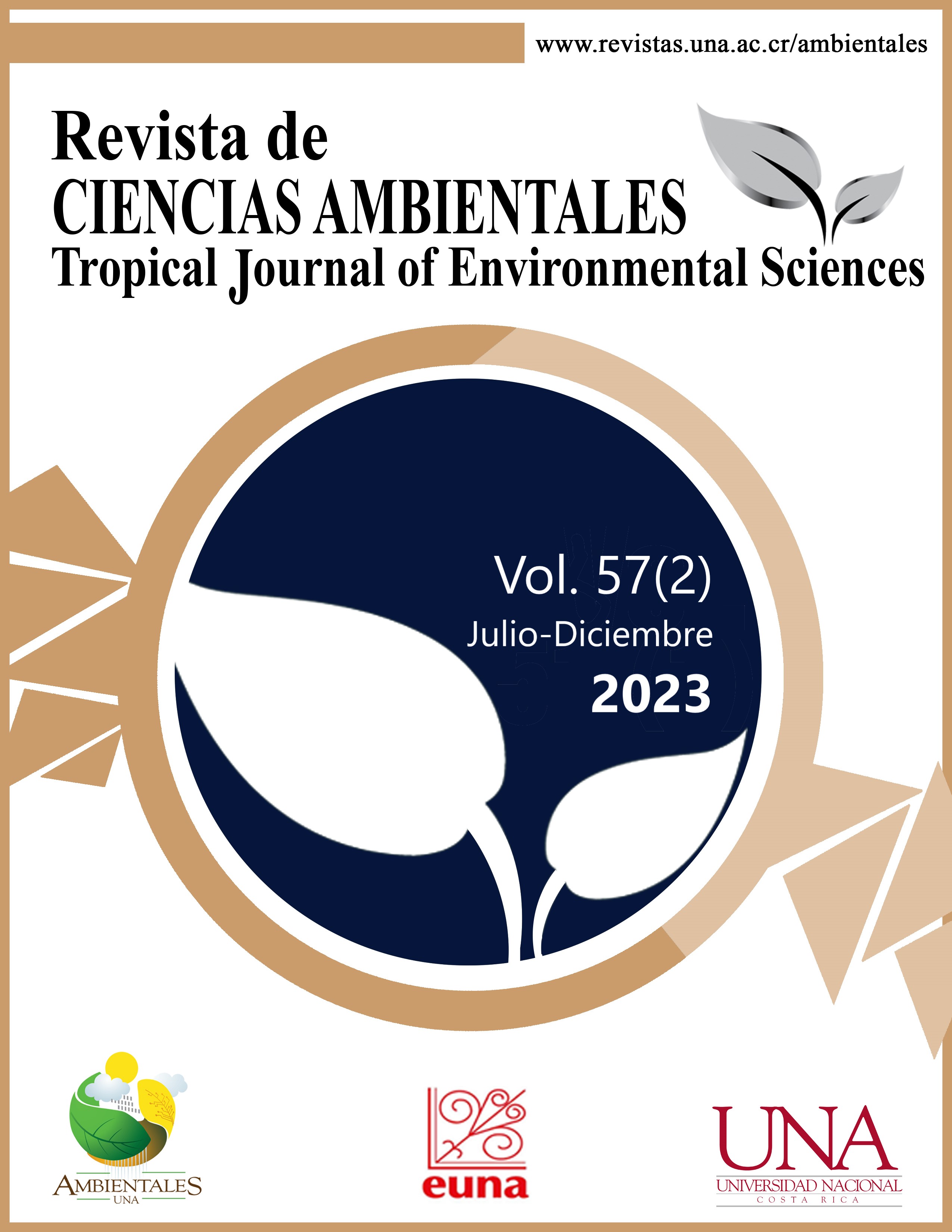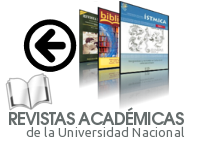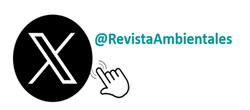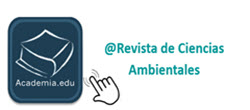An integral approach to environmental restoration in the face of climate change, cultural identity, and archaeological heritage: the case of Tzintzuntzan, Michoacán, México
DOI:
https://doi.org/10.15359/rca.57-2.3Keywords:
Archaeological remains, diversity, drought, hummingbirds, temperate forestsAbstract
[Introduction]: Conservation and restoration of the ecological and cultural heritage is a necessity given the current environmental crisis, in particular when considering the effects of climate change. This can be achieved through interdisciplinary research that allows the creation of strategies for restoring complex biocultural landscapes. [Objective]: To propose strategies for ecocentric, biocultural and productive ecological restoration in Tzintzuntzan (place of hummningbirds) a landscape dominated by precolumbian archaeological remains in the riverbanks of lake Paztcuaro, México, considering the expected effects of climate change. [Metodology]: A GIS was created with information about gthe socioenvironmental conditions of the study site, a climate change model was also elaborated for year 2050 and the loss of water lake water level was estimated. [Resultados]: From the present conditions of the vegetation, climatic modelling and the presence of archaeological remains we obtained that for the year 2050 most of the area (89%) of forests dominated by oaks and pines will have a climate appropriate for dry tropical vegetation. Considering the distribution of archaeological remains and the urban area we propose ecocentric, biocultural and production restoration strategies. [Conclusions]: A biocultural approach to restoration is desirable because it allows the recovery of ecological and cultural elements of the socioecosystem, with a emphasis in adaptation to climate change and the recovery of hummingbird habitat, being the hummingbirds the most important link between nature and culture in the region.
References
Allen, C. D., Macalady, A. K., Chenchouni, H., Bachelet, D., McDowell, N., Vennetier, M., Kitzberger, T., Rigling, A., Breshears, D. D., Hogg, E. H. (ted), Gonzalez, P., Fensham, R., Zhang, Z., Castro, J., Demidova, N., Lim, J.-H., Allard, G., Running, S. W., Semerci, A., & Cobb, N. (2010). A global overview of drought and heat-induced tree mortality reveals emerging climate change risks for forests. Forest ecology and management, 259(4), 660-684. https://doi.org/10.1016/j.foreco.2009.09.001
Amador G. A. (2000). Simulación dinámica del impacto ambiental por actividades agrícolas en la cuenca de pátzcuaro, Michoacán. Tesis de grado. Maestría en conservación y manejo de recursos naturales. Facultad de biología. UMSNH. Morelia, Michoacán, México 110 pp.
Ander-Egg, E. (1995). Técnicas de Investigación Social. Editorial Lumen. 24.a edición. Buenos Aires
Barajas-Arroyo, M., Brown, B., Punzo, J. L., Schondube, J. E., MacGregor-Fors, I., & Lindig-Cisneros, R. (2019). Biocultural Species Enhancement in the Archaeological Site of Tzintzuntzan, the “Place of Hummingbirds”. Ecological Restoration, 37(3), 192-198. https://doi.org/10.3368/er.37.3.192
Castellanos-Acuña, D., Vance-Borland, K. W., St. Clair, J. B., Hamann, A., López-Upton, J., Gómez-Pineda, E., Ortega-Rodríguez, J. M., & Sáenz-Romero, C. (2018). Climate-based seed zones for Mexico: guiding reforestation under observed and projected climate change. New Forests, 49(3), 297-309. https://doi.org/10.1007/s11056-017-9620-6
Chacón-Prieto, F., Rodríguez-Soto, C., Cuervo Robayo, A. P., Monroy, J. C. C., & Alagador, D. (2021). Protected areas in central mexico - are they fit in promoting species persistence under climate and land use changes? Biological Conservation, 260 https://doi.org/10.1016/j.biocon.2021.109186
Chacón-Torres, A., Ross, L. G., & Beveridge, M. C. M. (1989). Lake Patzcuaro, Mexico: Results of a new morphometric study and its implications for productivity assessments. Hydrobiologia, 184(1), 125-132. https://doi.org/10.1007/BF00014307
Chang, K., Winter, K., & Lincoln, N. (2019). Hawai‘i in focus: Navigating pathways in global biocultural leadership. Sustainability: Science Practice and Policy, 11(1), 283. https://doi.org/10.3390/su11010283
Commission for Environmental Cooperation (Montréal, Québec)., & Secretariat. (1997). Ecological regions of North America: toward a common perspective. The Commission.
Coro-Arizmendi, M. del, Berlanga, H. A., y Pineda-Maldonado, M. A. (2014). Colibríes de México y Norteamérica Hummingbirds of Mexico and North America. Comisión Nacional para el Conocimiento y Uso de la Biodiversidad (CONABIO). https://doi.org/10.5962/bhl.title.112129
Cué-Bär, E. M. C., Villaseñor, J. L., Amezcua, L. A., Tenorio, G. C., y Manríquez, G. I. (2006). La flora arbórea de Michoacán, México. Boletín de la Sociedad Botánica de México, 78, 47-81. https://doi.org/10.17129/botsci.1721
Descola, P. (2001). Construyendo naturalezas. Ecología simbólica y práctica social. En Descola, P. y Pálsson, G. (eds). Naturaleza y sociedad: perspectivas antropológicas. Siglo XXI. México.
Feria-Arroyo, T.P., Sánchez-Rojas, G. Ortiz-Pulido, R., Bravo-Cadena, J., Calixto, E. Dale, J.M., Duberstein, J.N., Illoldi-Rangel, P., Lara, C. y Valencia-Herverth, J. (2013). Estudio del cambio climático y su efecto en las aves en Mexico, enfoques actuales y perspectivas futuras. Huitzil, 14, 47-55.
Fisher, C. T., Pollard, H. P., Israde-Alcántara, I., Garduño-Monroy, V. H., & Banerjee, S. K. (2003). A reexamination of human-induced environmental change within the Lake Pátzcuaro Basin, Michoacán, Mexico. Proceedings of the National Academy of Sciences of the United States of America, 100(8), 4957-4962. https://doi.org/10.1073/pnas.0630493100
Hadley, A. S., & Betts, M. G. (2009). Tropical deforestation alters hummingbird movement patterns. Biology Letters, 5(2), 207-210. https://doi.org/10.1098/rsbl.2008.0691
Heidegger, M. (1988). The Basic Problems of Phenomenology, Revised Edition. Indiana University Press. https://play.google.com/store/books/details?id=VmatHCLJ4Q4C
Honty, G. (2007). América Latina ante el cambio climático. Centro Latino Americano de Ecología Social. https://flacsoandes.edu.ec/web/imagesFTP/1269363645.Honty_America_Latina_frente_al_cambio_climatico.pdf
Hornborg, A. (2001). The Power of the Machine: Global Inequalities of Economy, Technology, and Environment. Rowman Altamira. https://play.google.com/store/books/details?id=mfhuAAAAQBAJ
Huerto-Delgadillo, R. I., Vargas Velázquez, S., y Ortiz Paniagua, C. F. (2011). Estudio ecosistémico del lago de Pátzcuaro: Aportes en gestión ambiental para el fomento del desarrollo sustentable.
INAFED. (2010). Instituto para el Federalismo y el Desarrollo Municipal, Enciclopedia de los Municipios y Delegaciones de México. Estado de Michoacán de Ocampo. Tzintzuntzan. SEGOB. http://www.inafed.gob.mx/work/enciclopedia/EMM16michoacan/index.html
INEGI. (2009). Prontuario de información geográfica municipal de los Estados Unidos Mexicanos, Tzintzuntzan, Michoacán de Ocampo. http://www3.inegi.org.mx/contenidos/app/mexicocifras/datos_geograficos/16/16100.pdf
INEGI. (2010). Censo Nacional de Población y Vivienda 2010. Integración territorial (ITER).
Ingold, T. (2000). The Perception of the Environment: Essays on Livelihood, Dwelling and Skill. London: Routledge.
Jordan, W. R., & Lubick, G. M. (2011). Making Nature Whole: A History of Ecological Restoration. Island Press. https://doi.org/10.5822/978-1-61091-042-2
Lara-Rodríguez, N.Z., Díaz-Valenzuela, R., Martínez-García, V., Mauricio-Lopéz, E., Díaz, S.A., Valle, O.I, Fisher, A.D., Lara, C., & Ortiz-Pulido, R. (2012). Redes de interacción planta-colibrí del centro-este de México. Revista Mexicana de Biodiversidad, 83, 569-577. https://doi.org/10.22201/ib.20078706e.2012.2.965
Lévi-Strauss, C. (1964). El pensamiento salvaje Fondo de Cultura Económica. México.
Lyver, P. O., Akins, A., Phipps, H., Kahui, V., Towns, D. R., & Moller, H. (2016). Key biocultural values to guide restoration action and planning in New Zealand. Restoration Ecology, 24(3), 314-323. https://doi.org/10.1111/rec.12318
Martínez-Aguilar, J. M. (2017). Reacomodos de población en Tzintzuntzan durante el siglo XVI. Secuencia . https://doi.org/10.18234/secuencia.v0i97.1446
Merleau-Ponty, M. (2002). Phenomenology of Perception. Routledge. Londres
Metcalfe, S. E., Street-Perrott, F. A., Brown, R. B., Hales, P. E., Perrott, R. A., & Steininger, F. M. (1989). Late holocene human impact on lake basins in central Mexico. Geoarchaeology, 4(2), 119-141. https://doi.org/10.1002/gea.3340040203
Núñez, M.A. (2000). Manual de técnicas agroecológicas. Serie Manuales de Educación y Capacitación Ambiental. Programa de las Naciones Unidas para el Medio Ambiente. https://www.researchgate.net/profile/Ildefonso-Pla/publication/48216162_Manual_de_tecnicas_agroecologicas/links/00b4953b5c48b219bb000000/Manual-de-tecnicas-agroecologicas.pdf
O’Hara, S. L. (1993). Historical evidence of fluctuations in the level of lake pátzcuaro, Michoacán, México over the last 600 years. The Geographical journal, 159(1), 51. https://doi.org/10.2307/3451489
Pollard, H. P., Williams, E., Mestas, L. L., y Esparza, R. (2009). Un modelo para el surgimiento del Estado tarasco. Las sociedades complejas del Occidente de México en el mundo mesoamericano: Homenaje al Dr. Phil C. Weigand. El Colegio de Michoacán, Zamora, 225-253.
Pollard, H. P. (1980). Central Places and Cities: A Consideration of the Protohistoric Tarascan State. American antiquity, 45(4), 677-696. https://doi.org/10.2307/280141
Punzo-Díaz, J. L. (2013). Los Moradores de las Casas en Acantilado de Durango. Rememorando el Mundo de la Vida de los Grupos Serranos en el Siglo XVII. Ph. Dissertation, Escuela Nacional de Antropología e Historia, Ciudad de México.
Punzo-Díaz, J. L. (2014). Guion del Museo de sitio de Tzintzuntzan. INAH Michoacán.
Punzo-Díaz, J. L. y Navarro-Sandoval, F. (2022). Prospección arqueológica de Tzintzuntzan, antigua ciudad de Michoacán, mediante tecnología LiDAR: Primeros resultados. Arqueología Iberoamericana, (49), 3-8. https://dialnet.unirioja.es/servlet/articulo?codigo=8428795
QGIS.org, 2022. QGIS Geographic Information System. QGIS Association. http://www.qgis.org.
Ramírez-Herrejón, J. P., Zambrano, L., Mercado-Silva, N., Torres-Téllez, A., Pineda-García, F., Caraveo-Patiño, J., y Balart, E. F. (2014). Cambios a largo plazo en la fauna de peces del Lago de Pátzcuaro en México central. Latin American journal of aquatic research, 42(1), 137-149. https://doi.org/10.3856/vol42-issue1-fulltext-11
Roskamp, H. (2010). Los nahuas de Tzintzuntzan-Huitzitzilan, Michoacán: historia, mito y legitimación de un señorío prehispánico. Journal de la Société des américanistes, 96(1), 75-106. https://doi.org/10.4000/jsa.11264
Rzedowski, J., Zamudio, S., Calderón de Rzedowski, G., y Paizanni, A. (2014). Flora del Bajío y de regiones adyacentes (Vol. 31, pp. 1-36). http://inecolbajio.inecol.mx/floradelbajio/documentos/fasciculos/ordinarios/Anacardiaceae%2078.pdf
Rzedowski, J. (2006). Vegetación de México (1.ra edición digital). Comisión Nacional para el Conocimiento y Uso de la Biodiversidad, México.
Society for Ecological Restoration International Science & Policy Working Group. (2004). The SER international primer on ecological restoration. https://www.ser-rrc.org/resource/the-ser-international-primer-on/
Tilley, C. (2004). The materiality of stone: Explorations in landscape phenomenology. Berg. Oxford.
Townsend Peterson, A., Navarro-Sigüenza, A. G., Martínez-Meyer, E., Cuervo-Robayo, A. P., Berlanga, H., & Soberón, J. (2015). Twentieth century turnover of mexican endemic avifaunas: Landscape change versus climate drivers. Science Advances, 1(4) https://doi.org/10.1126/sciadv.1400071
Ulloa, A., Escobar, E. M., Donato, L. M., y Escobar, P. (2008). Mujeres indígenas y cambio climático. Perspectivas latinoamericanas. UNAL-Fundación Natura de Colombia-UNODC. Bogotá. http://postcolonialstudies.org/cms/wp-content/uploads/2016/09/mujeres-indigenas-cambio-climatico.2008.pdf
Vargas, S., y Guzmán, N. B. (2009). Deterioro de la cuenca del lago de Pátzcuaro, cambios en la identidad étnica p’urhépecha. XXVII Congreso de la Asociación Latinoamericana de Sociología. Asociación Latinoamericana de Sociología. https://cdsa.aacademica.org/000-062/2209.pdf
Published
How to Cite
Issue
Section
License

This work is licensed under a Creative Commons Attribution-NonCommercial-ShareAlike 4.0 International License.



















